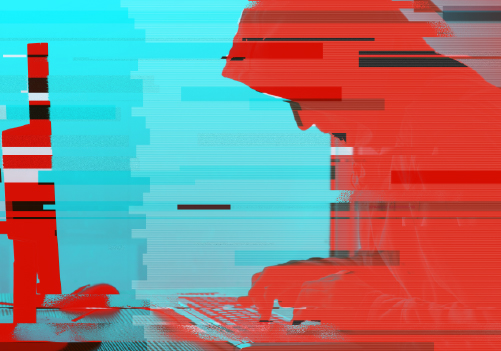DIY Cybersecurity Solutions for Small Businesses

DIY Cybersecurity Solutions for Small Businesses: The 8 Best Tips
Cyberattacks are increasing by the minute; not even small businesses are considered safe anymore. However, most hackers aren’t looking to steal money or valuables. Instead, they’re looking for information that can be used against the company for future attacks. Cybersecurity needs to be taken seriously regardless of your business size, especially in today’s world, where employees have access to your systems at home and in the office.
We are all about supporting businesses and want to help those in need, specifically those who either don’t have a cybersecurity partner or can’t afford one. If you want to try and maintain your cybersecurity on your own, here are eight DIY cybersecurity solutions for small businesses that may help keep your operations safe without spending much money or time on them.
Malwarebytes
There are two options available regarding this software: a free version and a paid version. The free version of this anti-malware tool will scan your system and remove the most common threats. The paid version of this tool includes a real-time scanner that detects malware before it can infect your computer.
CryptoPrevent
Many enterprises and individuals are turning to tools like CryptoPrevent to help protect themselves. CryptoPrevent is a tool that blocks ransomware before it can do real damage. It also has a self-defense mode that prevents the attack from spreading.
Macrium Reflect
It’s a powerful tool that allows you to create backups of your entire computer system. You can even schedule your backups regularly. It’s no wonder why this tool is a favorite among enterprises as a safe backup option.
Windows Defender
The Defender antivirus program is built into Windows and is one of the most powerful and reliable antivirus tools. It has several excellent features that protect your computer against viruses and malware and regularly scan for issues.
 SpamHero
SpamHero
Protecting your computer from spam is critical to keeping your systems safe. Fortunately, there are many options available to do this. The most popular is SpamHero, an easy-to-use interface that prevents unwanted emails from being sent to your computer.
Duo 2FA (Two-Factor Authentication)
This app provides an easy-to-use access 2FA solution and is perfect for ensuring your organization’s safety. Multi-factor authentication is the most recommended security practice by experts, and Duo 2FA makes it simple.
Snort
Snort is a powerful open-source Network Intrusion Detection System (NIDS) and Network Intrusion Prevention System (NIPS) that you can use on your computer and network to keep hackers out.
Squid
Squid ranks highly on the list of best free software to protect businesses from online threats like spyware, ransomware, and phishing.
Educating Employees on Cybersecurity
In today’s digital landscape, where cyber threats loom large, educating employees on cybersecurity is paramount. Human error remains a significant vulnerability, often exploited by cybercriminals to breach systems and networks. One crucial aspect of employee education is emphasizing the importance of anti-virus software. Encouraging regular updates and scans can mitigate the risk of malware infiltration, safeguarding sensitive data.
Furthermore, educating staff on policy enforcement points is essential. Understanding company policies regarding data handling, password management, and network access aids in preventing breaches caused by unwitting actions.
Moreover, fostering awareness about the potential consequences of system failure due to cyberattacks underscores the importance of vigilance and adherence to cybersecurity protocols. By empowering employees with knowledge and promoting a culture of cybersecurity awareness, organizations can fortify their defenses against cyber threats and minimize the impact of human error on their digital infrastructure.
Keep Company Devices Updated
Cybersecurity breaches often occur due to poorly maintained laptops, copiers, printers, and software. Reduce these risks by regularly updating your devices with the latest web browser, operating system, and anti-virus software. Additionally, implement strong password policies, conduct regular security audits, and educate employees on best practices. These proactive steps significantly minimize malware threats and online risks. If professional cybersecurity services are beyond reach, consistent maintenance and vigilant security practices become even more crucial for protecting your business.
Secure Wi-Fi Networks
Another efficient way to keep your data secure from online threats is by ensuring robust wireless connection security. This involves more than just setting up a password; it means making sure that your Wi-Fi connection is secure, encrypted, and hidden. To achieve this, configure your wireless access point (router) so it does not broadcast its network name (SSID), effectively hiding your Wi-Fi network from potential intruders. Additionally, password-protect access to the router itself to prevent unauthorized changes to your network settings.
Beyond securing your router, consider using VPNs for secure Wi-Fi connections. A Virtual Private Network (VPN) encrypts all data transmitted over your wireless connection, providing an extra layer of security and privacy. This is particularly important when using public Wi-Fi networks, which are often vulnerable to cyberattacks. By implementing these measures, you can significantly enhance the security of your wireless connections and protect your sensitive data from online threats.
Conclusion
We have to face the facts; no business nowadays is safe from the wrath of cybercriminals. Though these DIY solutions are helpful, they are only temporary. More advanced cybersecurity will be needed to protect your organization.
There are many ways to stay safe online but starting with awareness is essential.
You can check out our latest eBook, The Complete Guide to Ransomware Protection for SMBs, for more information on how to keep your business safe from ransomware attacks. Also, check out our Protected Harbor website, where we keep a regularly updated blog filled with cybersecurity advice. Be sure to sign up for our newsletter so you don’t miss any news or events!
If you’re interested in receiving a free cybersecurity assessment, fill out our form and take the next step to secure your business today.












 Email Phishing Scams
Email Phishing Scams




 Impact Of Angler Phishing Attacks on Business
Impact Of Angler Phishing Attacks on Business







 What Happened?
What Happened?